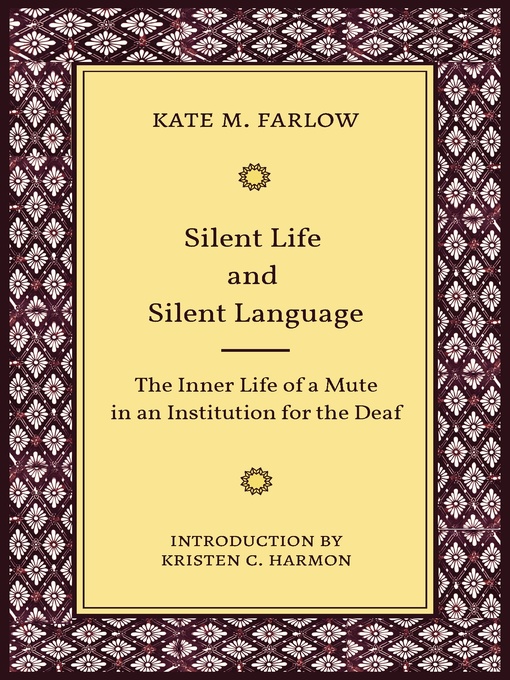- New eBook Additions
- Most Popular
- Try Something Different
- Deaf History
- Deaf Literature
- Deaf Community: In Their Own Words
- American Sign Language
- Children of Deaf Adults: In Their Own Words
- See all ebooks collections

Kate M. Farlow wrote this book with the goal of giving hearing parents hope that their deaf children would be able to lead happy and productive lives. She sought to raise awareness of the benefits of deaf schools and was an early advocate for the use of American Sign Language and of bilingual education. The Christian influence on the school and on the author is strongly present in her writing and reflects an important component of deaf education at the time. Descriptions of specific signs, games, ASL story nights, and other aspects of the signing community during the 1870s will be of interest to modern students and researchers in linguistics, deaf education, Deaf studies, and Deaf history. Farlow's work reveals a sophisticated, early understanding of the importance of access to language, education, and community for deaf individuals.
-
Creators
-
Series
-
Publisher
-
Release date
June 27, 2018 -
Formats
-
Kindle Book
-
OverDrive Read
- ISBN: 9781944838300
- File size: 654 KB
-
EPUB ebook
- ISBN: 9781944838300
- File size: 654 KB
-
-
Accessibility
-
Languages
- English
Why is availability limited?
×Availability can change throughout the month based on the library's budget. You can still place a hold on the title, and your hold will be automatically filled as soon as the title is available again.
The Kindle Book format for this title is not supported on:
×Read-along ebook
×The OverDrive Read format of this ebook has professional narration that plays while you read in your browser. Learn more here.